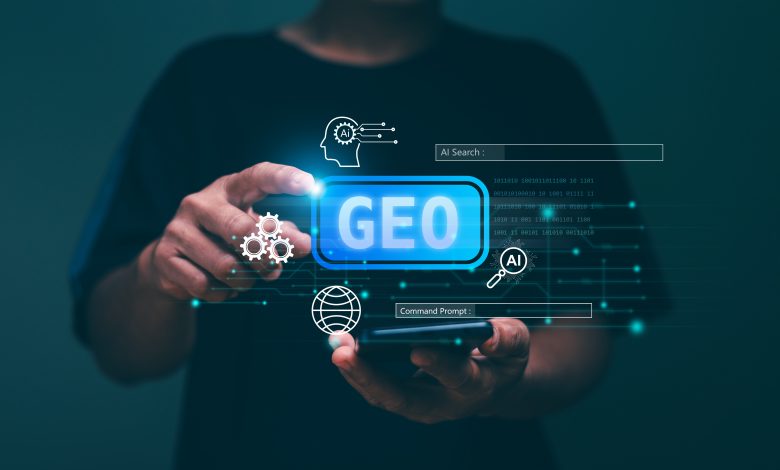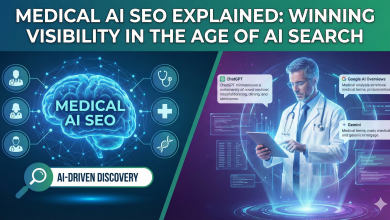
Imagine this scenario: it’s the night before your big investor presentation, and you are busy reviewing your slides and talking points. You’re ready to own the room and build trust through a measured presentation of your market positioning, product fit, and vision for the future. But while you are preparing to make a great first impression in the boardroom, the investor you will be meeting with is sitting on her couch and putting a prompt into ChatGPT to gather information on you in preparation for the meeting.
The first impression she gets tonight will cement your image in her mind before you even walk into her office. ChatGPT might make her inclined to trust you, or it might make her question why she even agreed to this meeting.
If this were you, which impression would you form from ChatGPT with a prompt around your name or business?
Visibility in AI-enabled search rewards service at scale. The brands that rank higher in searches on ChatGPT, Gemini, and other LLMs are the ones that make decisions easier and leave people better equipped than before. What earns trust in AI models is practical proof: ideas that remove friction, clarify choices, and help both people and AI engines make better decisions immediately.
Search used to be a map; now it’s a verdict. Instead of sending people to a list of links, AI assembles answers from sources it already trusts. If expert voices and organizations aren’t cited across those trusted sources, they risk vanishing from the conversations they’re built to lead.
GEO, or generative engine optimization, is the practical response. If SEO is about tuning your website for a crawler, GEO is about teaching the model who to recommend by ensuring your expertise is repeatedly validated in credible places beyond your own domain. It’s less about metadata and more about proof: clear, consistent facts about who you are, what you do, and what you’re known for, echoed across third-party outlets and your own “proof center.” Put simply, GEO aims to be named inside AI answers, not just ranked beneath them.
It is important to keep in mind that these shifts are happening against a backdrop of rising skepticism. According to the 2025 Edelman Trust Barometer Global Report, global trust in all news sources declined year over year, and a majority say it’s getting harder to tell respected reporting from content designed to mislead. That skepticism doesn’t stop at the browser. It follows buyers into their chats with AI, which is exactly why signals of credibility, consistency, and service matter more than sheer volume.
What changes most in the age of AI isn’t the importance of trust; it’s how trust is built. A brand’s reputation is increasingly carried by its leaders, practitioners, and researchers who show up as helpful teachers, not hype machines. The most effective thought leadership meets audiences where they already look for clarity: credible media, expert content, and their preferred search engine—and now, AI answers.
Rethinking earned, rented, and owned
Start with earned media, which involves being invited onto someone else’s platform to deliver your message, ultimately giving your audience the impression that you have earned your way there. Earned media can include your awards, media coverage, referrals, books, and speaking opportunities. In a world where AI leans on “safe” sources, editorial coverage functions like “SEO for AI.” When respected outlets, associations, or well-curated podcasts mention an expert by name and topic, and do it with reusable tips, dates, and clean bylines, models are more likely to lift that expert into answers. Fresh, steady citations compound; one big spike does not. Crucially, “respected” isn’t limited to national publications. Trades, professional associations, vetted review and directory sites, and podcasts that publish transcripts feed the various references that AI models consult.
Press releases also have a role. Wire distribution won’t replace journalism, but fact-rich releases can create consistent, machine-readable signals and sometimes get cited or spark downstream coverage that truly moves GEO. The key is clarity: plain-English summaries, one or two numbers that travel, and quotes that answer real questions.
Rented media channels are platforms where you control the content that goes out, but you do not own the relationship with the audience; the platform does. Rented media such as LinkedIn remain the relationship engine even if AI doesn’t always cite it directly. In feeds saturated with synthetic content, human-first posts grounded in mission and service attract collaborators and journalists and often lead to the third-party validation that models do cite. This is where perspective is sharpened, partnerships are sparked, and storylines are seeded. Treated this way, rented channels become the on-ramp to earned authority rather than a vanity metric chase.
Owned media, all the assets where you fully own the relationship to your audience, plays a quieter but pivotal role: it’s where models and humans go to confirm identities, quotes, and facts. Think of your site as a proof center rather than a brochure. A simple, findable press page that lists coverage with outlet, title, date, and a one-line takeaway makes it easy for models to “connect the dots.” Matching bios across pages and the web reduces identity mix-ups and gives AI the confidence to name a specific expert.
The identity layer: Become findable as a who, not just a what
AI recommends people, not just companies. That reality elevates the need for a defined, consistent expert identity—what I like to call an “Influence ID.” It’s the short, repeatable description of a brand name you can uniquely own, role, location, and the three to five topics where an expert reliably teaches. When this identity is echoed across interviews, bios, conference pages, and owned properties, discoverability accelerates because models encounter the same facts, the same way, in many credible places. A practical starting point is a brand audit: what appears on page one for your name today, and what appears when your name is dropped into a chatbot? Close the gap between what you intend to be known for and what the internet reflects.
This people-first approach also meets the moment inside complex buying groups. Edelman’s research on B2B thought leadership confirms that “hidden buyers” such as finance, ops, legal, and procurement consume and evaluate thought leadership like target users, yet are less likely to take sales meetings. High-quality ideas act like Trojan horses, opening doors that traditional sales and ads cannot. Strong content can level the playing field for lesser-known vendors in the final stages of a vendor decision by earning internal champions.
From tactics to tempo
The most common mistake right now is treating GEO as a one-time tune-up. Visibility in AI behaves more like fitness than a facelift; it’s built through repetition. Here are four actionable steps your organization can take to remain ahead of the AI curve and continue building trust that lasts.
- Clarify your lane. Articulate the few topics where your expertise is earned and energized, and codify a crisp bio that repeats across your site, contributor pages, and conference profiles. This establishes the stable “identity layer” that models look to confirm. Then sanity-check your first impression: run the name search and a handful of likely prompts in leading AI tools. What sources do the answers cite? Which facts are missing or inconsistent? Those clues reveal which outlets and pages deserve attention next.
- Publish for reuse. On owned channels, write pieces that answer real questions your audience actually asks, using clean headlines and plain language that makes quotes and steps easy to lift. Share the “why” behind your ideas on rented channels and invite dialogue. When you earn opportunities to share your expertise with media, lean into specifics: short how-to steps, a single number that reframes the problem, or a case study that teaches rather than sells. Over time, these details appear in AI answers because they are useful, not optimized.
- Keep the flywheel moving. After each placement, recap it on your site so there’s a single, current place where models (and people) can verify what you said and where. Aim for steady, sustainable momentum. A few meaningful mentions each quarter beats a spiky launch every time you want to be heard. And don’t overlook smaller signals: conference bios, partner pages, and quality directories are part of the strategic evidence trail.
- Measure like a communicator, not a link-farmer. Track whether AI tools are naming you, which sources recur in their citations, and whether editors from those outlets engage with your ideas. Tools can help, but a simple monthly check of the prompts that matter will tell you whether you’re becoming part of the answers that matter. And adjust your strategy accordingly by doubling down on outlets AI already trusts in your niche, and refresh the proof center with each new byline or interview.
The mindset shift that wins
For years, visibility could be purchased. Turn on the ads and the clicks would follow, and turn them off to watch them vanish. AI-era visibility compounds differently by accruing to the leaders and brands who build dense, public evidence that they are who they say they are and do what they say they do. You don’t need to outshout competitors; you need to out-credential them patiently, publicly, and across the sources humans and algorithms both recognize.
That’s the heart of strategic influence. It isn’t about ego or virality, but service at scale that teaches, clarifies, and contributes in ways that help people confidently move forward. Done consistently across earned, rented, and owned channels, this approach not only trains the model; it also trains the market to trust you. And in a time when trust is scarce, that is the most durable form of discoverability you can build.



